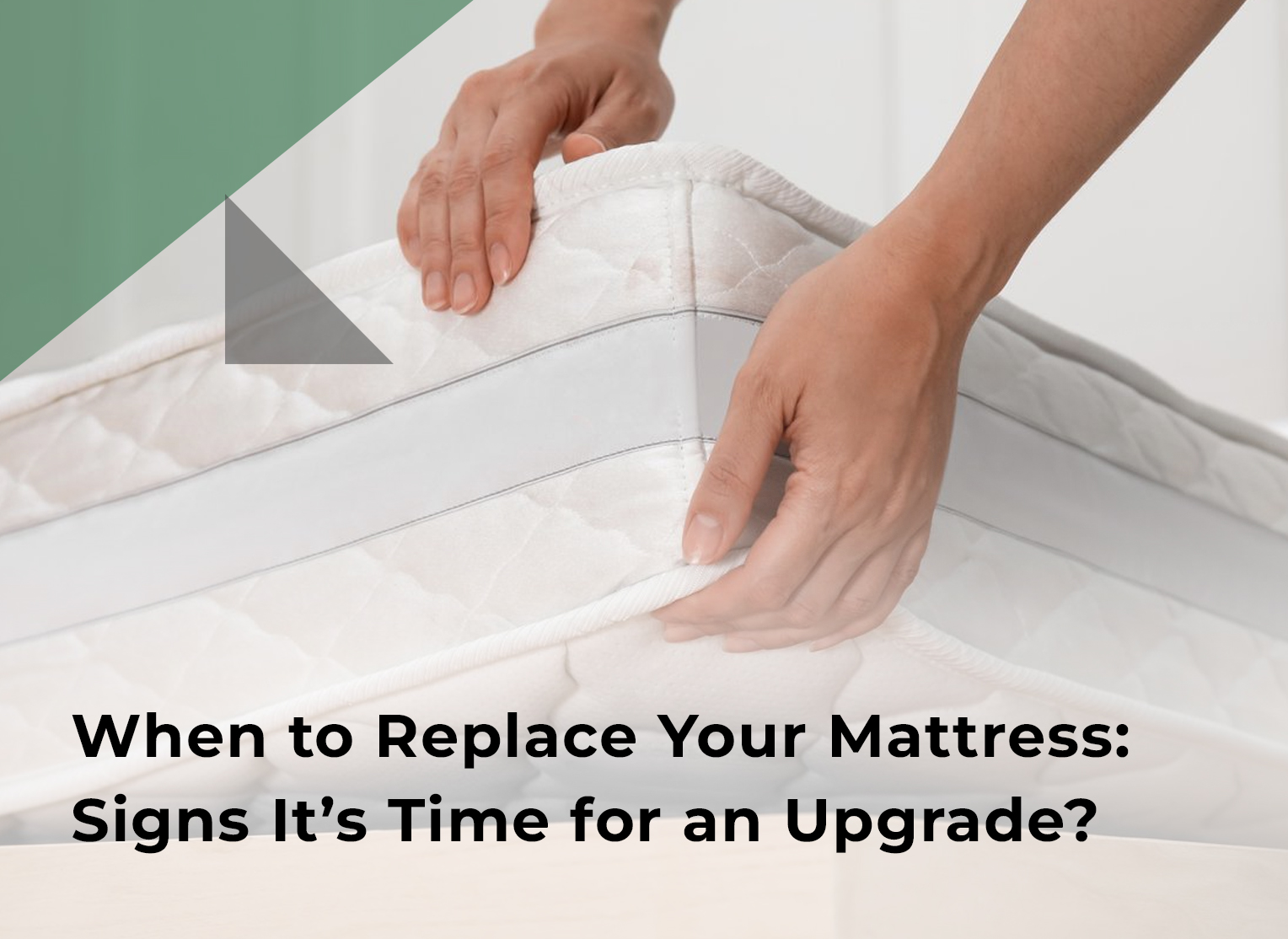Your mattress is the foundation of a good night’s sleep, but even the best mattresses don’t last forever. Knowing when to replace your mattress can save you from chronic aches, poor sleep quality, and wasted money. Here’s how to spot the warning signs and choose a fresh, supportive sleep surface.
1. Visible Sagging or Lumps
- What to look for: Indentations deeper than 1–2 inches, permanent body impressions, or lumps in the foam or springs.
- Why it matters: Sagging impairs spinal alignment, leading to back pain and restless nights.
2. Worsening Aches & Pains
- What to look for: Persistent back, neck, shoulder, or hip pain that improves when you sleep elsewhere (e.g., guest bed or sofa).
- Why it matters: As mattress support degrades, pressure points intensify, causing chronic discomfort.
3. Increased Allergies or Asthma
- What to look for: More frequent sneezing, congestion, or asthma attacks in bed—even after washing sheets.
- Why it matters: Over time, mattresses accumulate dust mites, mold spores, and allergens that trigger respiratory issues.
4. Age: The 7‑ to 10‑Year Rule
- What to look for: If your mattress is older than 7–10 years, it’s likely past its prime—even if it looks fine.
- Why it matters: Materials break down, foam softens, and springs lose tension, reducing overall support.
5. Noise & Spring Sounds
- What to look for: Creaking, squeaking, or popping from an innerspring or hybrid mattress when you move.
- Why it matters: Friction and worn coils mean the internal structure is failing, compromising comfort.
6. Poor Sleep Quality
- What to look for: Tossing and turning, frequent awakenings, or waking up tired despite 7–8 hours of sleep.
- Why it matters: A sagging or unsupportive mattress leads to restless sleep cycles and reduced REM recovery.
7. Allergic Stains & Odors
- What to look for: Yellowish sweat stains, mildew smells, or musty odors that persist after cleaning.
- Why it matters: Stains and odors indicate moisture damage and microbial growth, which degrade materials and health.
How to Choose Your Next Mattress
Once you’ve identified it’s time for an upgrade, consider these factors:
1.Mattress Type
- Memory Foam: Conforms to your body and relieves pressure.
- Innerspring: Offers bounce and airflow.
- Hybrid: Combines foam comfort with spring support.
2.Firmness Level
- Soft (3–4/10): Best for side sleepers.
- Medium (5–7/10): Ideal for combination sleepers and couples.
- Firm (8–10/10): Suited to back sleepers and heavier body types.
3.Materials & Certifications
- Look for GOTS‑certified organic cotton covers and OEKO‑Tex® foams to ensure non‑toxic, hypoallergenic sleep.
4.Trial & Warranty
- Choose brands offering at least a 100‑night trial and a 10‑year warranty to protect your investment.
- Choose brands offering at least a 100‑night trial and a 10‑year warranty to protect your investment.
Extending Your Mattress’s Lifespan
While replacement is inevitable, these habits can squeeze extra years out of your bed:
- Rotate/Flip Regularly: Rotate every 3 months; flip if double‑sided.
- Use a Mattress Protector: Guards against spills, dust mites, and stains.
- Maintain Proper Support: Ensure your bed frame or foundation matches the mattress specifications.
Final Thoughts
A supportive, hygienic mattress is crucial for restful sleep and overall well‑being. By watching for sagging, pain, allergies, and age, you’ll know precisely when to replace your mattress and how to choose a superior successor. When it’s time, explore Raenco Mills’ premium mattress collection—engineered for comfort, durability, and sustainable sleep..


